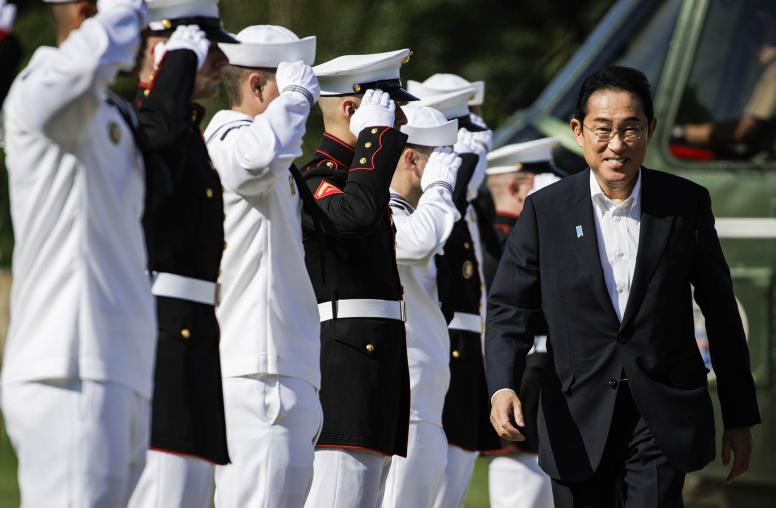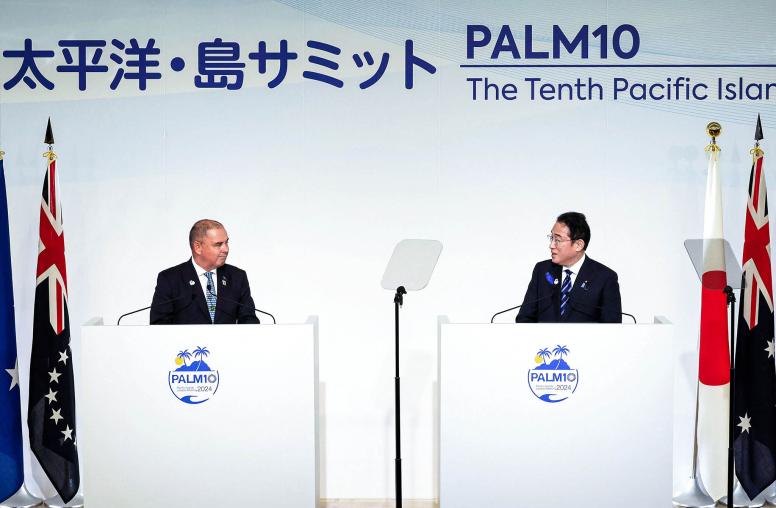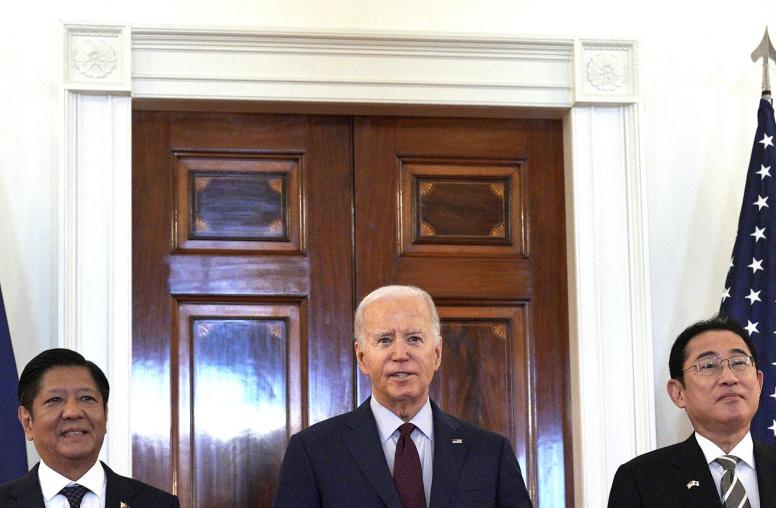Japan, South Korea Must Address Mounting ‘Debt’ of Historical Atrocities
Extraordinary restitution and investment will be required to achieve sustainable reconciliation.
Few issues between Japan and South Korea draw as much attention and political resources while producing such ephemeral results as historical reconciliation. In two years, the countries will reach milestones for major agreements, such as the 10th anniversary of the 2015 “comfort women” agreement and the 60th anniversary of the Treaty on Basic Relations between Japan and South Korea. Between these two landmark deals are several official Japanese apologies, government speeches acknowledging Japan’s colonial past, visits by Japanese dignitaries to Korean memorial sites, a public-private reparations program, government-level “friendship” initiatives and civil society efforts to grapple with so-called history issues.

Yet, all these reconciliation efforts have been fundamentally flawed, whether by process, content or seeming insincerity. This history of ineffectual apologies and agreements has left many Koreans feeling Japan has not sufficiently atoned for its colonial actions. At the same time, some Japanese suffer “apology fatigue,” which stems from issuing numerous apologies without seeing sustainable improvements in relations.
Scholars and activists have identified many reasons for the lack of progress, such as domestic backlash, conflicting national identities, rising nationalism, treaty erosion and fundamental disagreement on the scope and legitimacy of the 1965 Treaty on Basic Relations. To address these obstacles, some have proposed drawing lessons from European reconciliation successes, inviting the United States to apply pressure and shaming and praise.
All these strategies are likely to be more effective if the peace process takes seriously the impact of time — more specifically, the compounding costs of delayed justice — on Japan-South Korea relations.
Injustice as Debt
The postwar decolonization process came in fits and starts and was not evenly applied across the globe. To this day, former colonies seek restitution for stolen artifacts and other unsettled colonial legacies. When initial injustices are not aggressively addressed soon after a conflict, residual animosity can evolve into new areas of contestation. This phenomenon is analogous to “debt,” where if a former aggressor does not immediately pay the “principal” in full, it will accrue “interest” that must be paid in addition to the original debt. This compounding interest can capitalize, creating conditions where a debtor can owe more even after making numerous payments.
In the case of Japan-South Korea relations, the atrocities committed during the colonization of Korea was the principal to be repaid soon after World War II. However, due to the geopolitical context and domestic politics, Japan-South Korea relations were not formally reestablished until 1965, 20 years after the end of the Japanese occupation. During the two decades of non-apology from Japan and postwar nationalism in South Korea, anti-Japanese sentiment grew in South Korea. It generated interest, or new areas of conflict, that have distinct domestic and international political characteristics, such as bans on Japanese cultural goods, disputes over the naming of bodies of water and competing claims over the Dokdo/Takeshima islands. Moreover, some issues were unknown or minimized at the signing of the 1965 treaty, such as the forcible abduction of comfort women, which resulted in mutual silence until the late 1990s. Sociologist Hiro Saito refers to this complexity as “history problems,” since the history problem consists of multiple controversies that have developed trajectories of their own.
My team’s research identified at least 186 statements or press briefings from the Blue House and South Korea’s Ministry of Foreign Affairs between November 2006 and November 2022 concerning comfort women and forced laborers. In the same period, Japan issued at least 52 statements on the subject. Notwithstanding the far-right revisionists in Japan who seek to downplay or deny the comfort women system, leaders in both countries have identified the original sin and have paid domestic political costs to address it.
However, despite past efforts to address Japan’s colonial legacy, disputes over history can evolve and create areas of animosity that negatively affect future relations. For example, following Japan’s decision to remove South Korea from its “white list” of trusted trading partners in August 2019, then South Korean President Moon Jae-in proclaimed in an emergency cabinet meeting that, “we [South Korea] will never again lose to Japan.” Japan’s export restrictions disrupted South Korean supply chains and forced the Moon government to turn to local suppliers and other countries to address this newfound economic vulnerability. This trade dispute, which stemmed from a 2018 forced laborer court ruling, was as much a reflection of contemporary economic warfare and national pride as it was unreconciled history. Interest on the original principal continues to accrue.
Allowing new issues to grow out of the original harm makes reconciliation more difficult over time. Extremely onerous debt obligations, such as predatory lending with student loans, can lead debtors to abandon repayment altogether because they feel nothing can be done to settle accounts. Moreover, when terms and conditions change in an agreement, such as the request for additional payments, the debtor may lose faith in the process altogether. The failure of the 1965 treaty, the 1995 Asian Women’s Fund and the 2015 agreement to settle the comfort women issue has made the Japanese public less supportive of additional apologies. With the Korean public also dissatisfied with previous agreements, current efforts by the Yoon Suk-yeol and Fumio Kishida governments, in Seoul and Tokyo, respectively, are unlikely to yield lasting results.
Going Above and Beyond
Experts have urged Japan and South Korea to settle history issues so they can turn their attention to addressing security threats such as China, North Korea and Russia, and maintain a rules-based order in the Indo-Pacific. Yet, any agreement that uses apologies primarily for external geopolitical security concerns or economic benefits would possess the same fundamental flaws as previous agreements. Meeting victims’ demands has not been a central part of Japan-South Korea reconciliation, security or trade agreements, which is why elite-led efforts appear so hollow. Short-term and state-centric objectives sow distrust among publics jaded by years of short-lived agreements and ensure the few remaining survivors will not gain closure. For this reason, Washington’s role in mediation should be limited to avoid the perception that reconciliation is simply an obstacle to overcome so that it can focus on regional security threats, especially since the United States has never fully confronted its role in covering up the original sin. Moreover, a limited U.S. mediation role would avoid the risk of two important allies interpreting anything less than full support as a slight.
Seventy-seven years since the end of the war, reconciliation between Japan and South Korea needs to fulfill the desires of the remaining victims of the war as well as force both countries to recalibrate how they engage with their histories. This begins with inviting the remaining 11 comfort women to the negotiating process. The decision of some victims not to participate should be respected, especially when considering there may be many more victims who have chosen to never speak about the issue publicly and relive their trauma since the end of World War II. Also, while Japan has offered formal letters of apology, medical and welfare support and reparations in previous agreements, it should continue to pay more.
Thirty-six of the then 47 surviving women and families of 68 of 199 deceased victims had received or expressed intent to receive funds (approximately $84,000 per person) from the $8.7 million allocated by the Japanese government in the 2015 agreement. Japan can go above and beyond “settled” agreements and pay a higher cost than what it considers “fair” to cover accrued interest and demonstrate deep remorse. Minimum payments can lead to inescapable debt. Previous lawsuits filed by victims have requested between $90,000 and $1,000,000, which provides a benchmark for the Japanese government to surpass.
The Korean government and the public should facilitate, not frustrate, the willful acceptance of reparations. In 2019, the Moon government shut down the fund established in the 2015 agreement to “recover the honor and dignity of the victims,” even though dozens of victims accepted it. Similarly, victims were stymied from accepting funds from the Asian Women’s Fund, which was founded in 1995, as nongovernmental organizations pressured claimants not to accept Japanese funds in order to receive a special payment issued by the Korean government. Organizations that support victims should play a supporting role and cannot speak or accept an agreement on behalf of the actual victims. Lastly, decisions of families with legal standing to speak for victims that have passed away or are incapacitated should be duly recognized.
The Yoon and Kishida governments are also currently negotiating the forced laborers dispute. The governments should give regular updates on the progress of negotiations and calibrate the terms to meet the needs of the victims. Previous payments by Japanese corporations and Korean court rulings range from $16,000 to $134,000, which provides a benchmark to work with.
Creating Dividends through Memorialization and Education
Instead of “moving on” from the history issues, the Japanese and Korean governments and their publics can “move with” history through memorialization and education. Extending the financial analogy, Japan-South Korea relations should focus on investments that can yield “dividends” — that is, incorporate actions that create new areas of cooperation instead of putting a definitive stamp on the past. Critically engaging with history in the present and the future is an effective way of controlling potential diplomatic flare-ups that stem from the politicization of the history issues.
The most tangible area of contestation in the comfort women issue has been the erection of comfort women statues in South Korea and around the world. Japan’s desire for the removal of the comfort women statue in front of the Japanese Embassy in Seoul was a main sticking point in the 2015 comfort women deal. Third-party states also faced immense lobbying pressure from Japan and South Korea over similar statues.
Statues commemorating Korean victims of colonization need not be antagonistic. Some already exist, such as the Monument in Memory of Korean Victims of the A-bomb in Hiroshima Peace Memorial Park and the Monument for Korean Atomic Victims in Nagasaki Peace Park. Both monuments acknowledge forced labor as the reason why Koreans were in Hiroshima and Nagasaki when the atomic bombs were dropped in 1945. The construction of both monuments was not an easy or nonpolitical process. Both began from civil society pressure and gained increased prominence, in size and location, over time as the local and South Korean governments worked together in their evolution. The success of these two cases suggests that new memorials relating to comfort women and forced laborers could be constructed, but their content and location should be continually negotiated in the spirit of improving relations and gaining a better understanding of the past moving forward.
Constructing peace museums would also be a productive approach to addressing misinformation and education deficits and creating positive Japan-South Korea narratives. Roy Tamashiro and Ellen Furnari contend that peace museums can have broad-ranging narratives, but ultimately “museums for peace can play a significant role in peace education by raising awareness about multiple definitions of peace and by enabling audiences to reflect on, discuss and participate in deliberated paths toward personal peace and cultures of peace.” Such a space to reflect on Japan’s colonial history already exists in Japan, notably at the Hiroshima Peace Memorial Museum, Nagasaki Atomic Bomb Museum and the Women’s Active Museum on War and Peace in Tokyo, although the issue is limited to only a small portion of the former two museums. A Japanese government-supported museum in Tokyo with a board of trustees comprised of stakeholders from both countries would complement the War and Women’s Human Rights Museum in Seoul, which is primarily a point of antagonism between the two countries. By giving the Japanese side a sense of agency, the Korean side recognizes Japan’s work to uphold its peace identity.
Peace monuments and museums leave a tangible legacy for victims who will soon pass away. Moreover, monuments and museums are future-oriented as they are visited in perpetuity, and the content of the museums is continuously updated, negotiated and debated. This negotiation requires both sides to critically examine how they have previously told the history. Japan must unequivocally call out suspect accounts denying the coercive and inhumane nature of the comfort women system, and South Korea should not silence scholarly exploration of the complexities of the colonial era and bring attention to the domestic discrimination faced by comfort women in the postwar era, which included ethnic Japanese.
From Final and Irreversible to Continued Engagement
It would be presumptuous to outline what the final language of a deal over comfort women or forced laborers should be. What constitutes an adequate apology should be determined by the victims in the privacy of negotiating rooms and made public at their behest. In that spirit, the Japanese and South Korean governments and the public must refrain from rehashing the past on their behalf and spend their resources on critically engaging the past and discovering new areas of cooperation. Addressing the past is just the beginning and peace museums and monuments will provide a tangible commitment to a genuine apology to victims and to promote human rights going forward.
Tom Phuong Le is an associate professor of politics at Pomona College. Kaylin Kim and Hina Tanabe provided research assistance on this article. Research for this essay has been supported by the Graves Awards in the Humanities, the Korea Foundation and the Japan Foundation.



